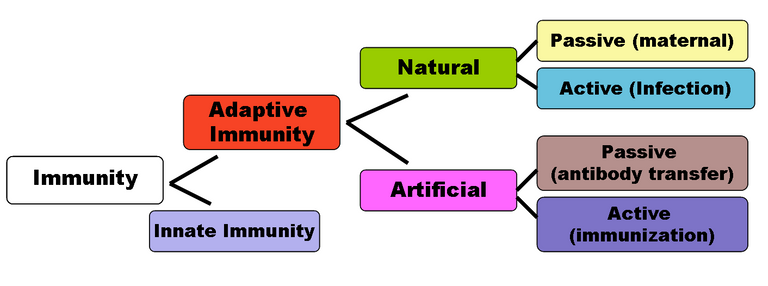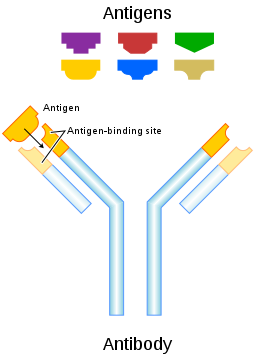What is immunity?
Defense is a very interesting vocabulary in the world of combat. For many centuries now, even millenniums, kingdoms and nations have increased in size and decreased, acquired lands and loosed it, gone to battle and lived at peace, gained men and loosed them. They had lost linage, gain spoils, gain authority and loosed relevance. All these are all targeted towards one thing, preserving the existence of a system.

Licence: CC0 :: Source: Pixabay
If you are a fan of action movies, you would relate to the fact that not every problem can be solved with patience and other calm virtues. Sometimes a person has to fight for peace. The human body act in this rather strange manner against foreigners and invaders. The human body can be likened to a very large nation with different individuals which are the cells. Different types of specialized cell performing diverse functions make up the human body. Just as much as the economy of the nation is going fine, there lie invaders who want to take over the enormous wealth of the great system of cells. Brilliantly, the body has soldiers and a system employed in protecting itself. This defense is known as immunity.
Many people have a simple and insufficient idea of what immunity is thereby transferring all cudose to the white blood cells which happens to be one of the members in line of body defense. There are other mechanism and structures involved in providing a strong immunity.
Types of Immunity

Licence: CC-BY 2.5 :: Source Wikimedia :: Author:User: DO11.10
Immunity in simple terms is defined as the capacity of the body to resist pathogenic agents. These agents can be viruses, bacteria, fungi, toxic substances and toxins. Immunity against these agents can either be innate or acquired.
Innate immunity is the first line of defense of the body against pathogenic material. Unlike the acquired immunity, it is an inborn defense mechanism and it is not specific in its action. The human gastrointestinal tract has digestive enzymes for food digestion and the stomach has hydrochloric acid to aid protein digestion. However, these enzymes and acid help in destroying ingested toxic substances. This contributes to the innate immunity of the human body.
The human skin which spread the entire body like a blanket is a demarcation between the internal body system and the external world. It also contributes to the innate immunity as it has a layers of cells preventing invasion by foreign substances. The skin also contains beta-defesins which ate antimicrobial in nature, capably of digesting microbes. The enzyme lysosyme found in the saliva is also present in the skin, it functions to destroy bacteria.
Other innate immunity mechanism are present in the blood, tissues, respiratory systems as chemical substances and living cells, non specific in function and innate.
The other type of immunity is the acquired immunity. As the name implies, it is an acquired and developed mode of defense or resistance against specific pathogenic agents. It is the most potent immunity. Its effectiveness is highly important to life. This types of defense is carried out by a type of white blood cells known as lymphocytes. The lymphocytes develop from the bone marrow during intrauterine life. These cells when released into the blood have a lifespan of 12 to 24 hours. There are two types of lymphocyte concerned with two different types of acquired immunity: T-lymphocytes concerned with cellular immunity and B-lymphocytes concerned with humoral immunity.
Cellular immunity also known as T-cell immunity involves several types of cells such as th macrophages, natural killer cells and T lymphocyte to fight against foreign and pathogenic agents, hence the name cellular immunity. This type of acquired immunity is the major defense mechanism against infections caused by viruses and fungi- and a few bacteria such as tubercle bacillus. It is responsible for the body’s rejection of transplanted organs and tissue.
Cellular immunity begins to develop when a body comes in contact with antigens of the invading micro-organism. Antigens are chemical component found usually on the surface of cells; these substances can cause immunological responses. With the help of antigen-presenting cells and other mechanism, the body develops immunity against the invading agent.
Humoral immunity uses chemical substances called antibodies to fight against pathogenic materials, unlike the cellular immunity which uses living cells. These antibodies involved in humoral immunity are secreted by B-lymphocytes into the blood and the lymph. This type of acquired immunity is the major defense in line against bacterial infections. The antigen presenting cells and macrophages also play an important role in humoral immunity.
Role of Antigen- presenting cells in immunity
These are specialized cell in the body that functions to release the antigenic material of an invading organism and these antigens to a special type of T lymphoctes cells known as the helper T-cell. There are three types of antigen presenting cells: macrophages, dendritic cells and B lymphocytes B lymphocytes acts as both antigen-presenting and antigen-receiving cells. Unlike the other two, B lymphocytes are the least efficient antigen presenting cells.
Macrophages are involved in innate immunity. However, this type of immunity is not very efficient. Macrophages phagocytose invading micro-organisms and release their antigens. Dendritic cells unlike macrophages only trap the antigens while B lymphocytes pinocytose the invading organism. Antigen presenting cells then present the antigens to the helper T cells.
Types of T lymphocytes
There are four types of T lymphocytes: Inducer T cells or helper T cells, cytotoxic T cells /b> or killer T cells, memory T cells and suppressor T cells.
Helper T cells are involved in activating all other T and B lymphocytes. This is because they are activated with the presenting of antigens signifying invasion. Cytotoxic T cells when activated by Helper T cells attack the invading organism directly. The cytotoxic T cell binds with the antigen of the invading microorganism and releases cytotoxic substances to destroy the organism.
However, the cytotoxic T cells can attack the body’s own cells which are affected by foreign bodies. These human cells can have viruses entrapped in them attracting cytotoxic T cells to them. The cytotoxic cells destroys the affect cells along with the virus. This killing of native cells (body’s own cells) is however suppressed by the suppressor T cells. They suppress the activities of the helper T cells and cytotoxic T cells.
Memory T cells are involved in keeping record of an invading organism. They are found within lymphoid tissue, they get activated by pathogenic antigen but do not enter into blood circulation. When the body is exposed to the same invading pathogenic organism a second time, the memory cells which have now migrated to other tissues of the body recognizes these same organism and immediately activate other T cells. With this course of action, invading pathogenic organism is destroyed faster. The immunity against the same pathogenic organism is more efficient this time.
Antibody role in human immunity

<Licence: Public Domain :: Source: Wikimedia
Antibodies act in different manners against pathogenic materials and foreign bodies. A foreign red blood cell when attacked will be agglutinated. Agglutination is the clumping together of foreign cells held tightly by antibodies. The antibodies bind to the antigen present on the foreign cells and clump them together till they eventually die.
Antibodies also act by precipitating toxins as in case of tetanus. They cover toxic site of antigen present on pathogenic cells and sometimes rupture the pathogenic cell. There are also other indirect mechanism of antibody actions.
Immunization
This is a medical attempt to make the body prepared to fight a specific disease inducing immune resistance to that disease. There are two types of immunization; passive immunity and active immunity.
Active immunity against a specific disease in active immunization is developed by activating the immune system of the body. Antigens of the disease are introduced to the body and the body develops resistance to the disease by producing antibodies. Active immunization can occur either naturally or artificially. Artificial active immunization is achieved with the aid of vaccines and toxoids.
Passive immunity is developed with challenging the immune system of the body. Serum or immunoglobulins from a person already affected by the disease is transferred to a non-immunized patient. This can be described as transferring a person’s immunity to another. Passive immunity can be acquired from the mother before and after birth or can be done artificially with the aid of injections.
Further reading:
Immunity
Antigen
Antibody
Lymphocyte

